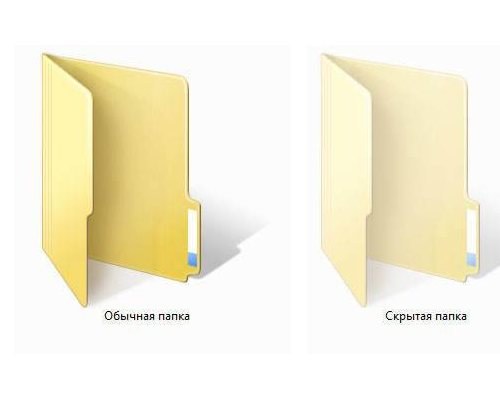Why the need for hidden files and folders
Often hidden are system files and folders. The operating system makes these files hidden for security reasons because the user may inadvertently or unknowingly delete or modify any of the files needed for the proper functioning of the whole system, which can lead to serious consequences: errors, to the total collapse of the system. Hiding a file, Windows protects itself from the user once again avoid any such temptation.
Some applications and programs for the same reason sometimes hide their files from users. Hide private files and folders, and the users themselves, when they don't want these data could someone find.
A hidden file in appearance different from a regular file. When you have enabled show hidden files and folders, you can see that the icons of hidden folders, or the names of the hidden files appear translucent.
How to see hidden files and folders in Windows XP
Show hidden files and folders in two ways - through the "control Panel" or via "Windows Explorer".
1. Displaying via "control Panel". Go into "control Panel", this is done through the standard menu "start": "start" - "control Panel". In the opened window, in the top menu click the item "Service" in the drop down menu click on "folder options". Opens the properties window where you can select the tab "View". In this tab, in advanced settings select the item "Hidden files and folders" and put a checkmark in "Show hidden files and folders". Save the changes - press "Apply" and "OK".
2. Display via Windows Explorer. Go to Windows Explorer: double click open the item "My computer" or simultaneously press the keys Win and E. In the top menu, select "Service" and then are similar to the first item: select "folder options" then "View", look for "Hidden files and folders" click "Show hidden files and folders", "Apply", "OK".
After the operations hidden up to this point, the files and folders become visible to the user and you can work with them just as with normal files. However, there is a way to work with hidden files and folders without making them visible in the system. You can search for and open with any file Manager, for example, using the popular Total Commander.
To do this, open the file Manager, select the item "Configuration", click "settings". Opens the settings window consists of two parts. In the left part of the window, look for "Content pane". Clicking on it, you can see in the right part of the window a list of options, including looking for the "Display files" and put a checkmark in "Show hidden/system files", then click "Apply" and "OK".
